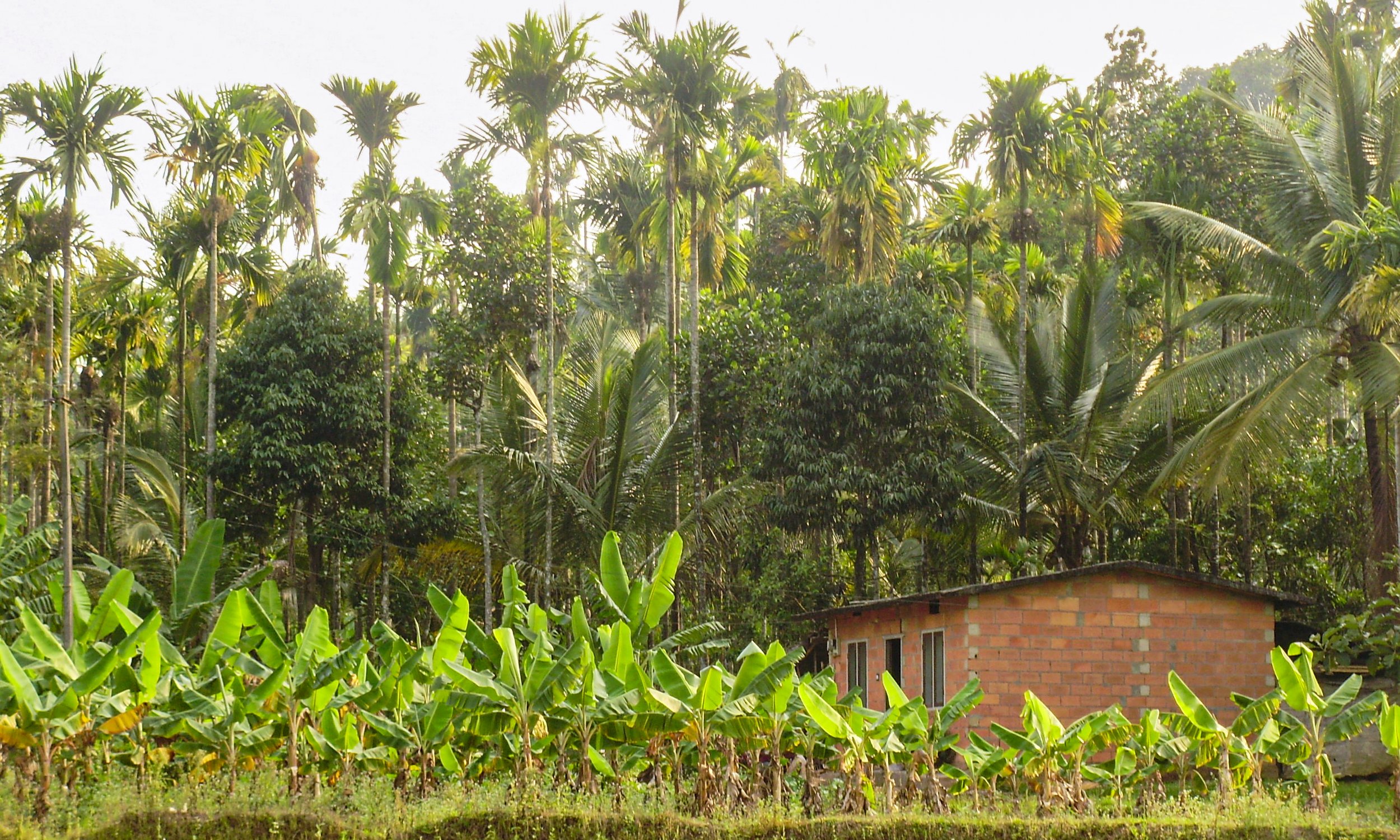Why Agroforestry is Crucial for the Future of Cacao Farming
At California Cultured, we are passionate about chocolate and protecting the planet. Not only is it our mission to bring cell-cultured chocolate to market as a way of curbing deforestation and unethical labor practices in the cocoa industry, but we want to uplift the people and ideas that are actively working towards bettering these same conditions.
One of the ways to mitigate mass deforestation in cacao farming is by fully switching to agroforestry models and eliminating monocropping.
What is Agroforestry?
As the name suggests, agroforestry is a combination of agriculture and forestry. The process is a holistic one that considers how trees, shrubs, animals, crops work together instead of individually. The UN Food and Agriculture Organisation (FAO) define agroforestry as: “A dynamic, ecologically based, natural resource management system that, through the integration of trees on farms and in the agricultural landscape, diversifies and sustains production for increased social, economic and environmental benefits for land users at all levels.”
Agroforestry is a practice that goes back hundreds of years in many parts of Central and South America. It’s now making a comeback in cacao farming as farmers recognize they must protect their land in order to mitigate deforestation and the risks of climate change.
The Problems with Monoculture Crops
Monoculture farming can be defined as growing the same crop on the same piece of land, year after year. It’s popular because this method can produce higher yields in the short term, but eventually it depletes the nutrients of the soil, reduces organic matter in soil and can cause erosion. This “slash-and-burn” technique is a major cause of deforestation, soil erosion and biodiversity loss which makes the crop being grown vulnerable to the impacts of climate change as well as pests and diseases.
This style of farming is vastly unsustainable over the long term for small farmers. Once the land stops producing at a high rate, farmers are forced to clear the forest to open up new fields to return to that higher level of yield.
Monoculture cacao plantations are a leading cause of deforestation rates around the world. These outdated farming systems require high amounts of external inputs such as water and fertilizer. Not only are they having devastating effects on landscapes in cacao growing regions, but they also threaten the long term livelihood of small farmers around the world.
For example, it is estimated that Ghana and Côte d’Ivoire have lost between 80-95% of their forests since 1955, leading to widespread rainfall loss and increasingly unpredictable weather patterns. For these countries, rolling out agroforestry wherever possible can help anchor rainfall and restore some tree cover.
Because of the unsustainable nature of monocropping, cocoa agroforestry needs to become a priority for cacao farmers. Many environmentally-conscious chocolate makers already source their beans from farms or cooperatives that utilize cacao “agroforests.” Monoculture cacao is a result of chocolate brands who prioritize short-term profit over long-term sustainability.
The Benefits of Agroforestry in Cacao Farming
Alarming reports claim cacao could disappear within the next 40 years, due to the destructive nature of monocropping. As a response, Ghana and Côte d’Ivoire, where the majority of the world’s cacao has been grown in monoculture systems for decades, agroforestry is slowly being introduced as farmers are encouraged to grow mangos, cashews and other trees and crops alongside their cacao.
According to Voices of Organizations in Cocoa (VOICE) Agroforestry can optimize cocoa production, farmer income, carbon storage and environmental benefits and supply chain resilience.
A recent study showed that cocoa agroforestry contributed to climate change mitigation by storing 2.5 times more carbon than monoculture methods which aids in lowering mean temperatures and buffering temperature extremes.
Cocoa agroforestry systems can bring a wide range of ecological benefits; biodiversity conservation of local flora and fauna, carbon sequestration, preserving and strengthening soil moisture and fertility, contributing to pest control and microclimatic control such as stimulating rainfall.
With all of these benefits, the question arises: why isn’t the entire cocoa sector using agroforestry techniques?
Incentivizing A Transition to Agroforestry
While agroforestry methods are clearly the better option for the environment, cacao farmers need to be incentivized to use them without losing their income.
Previously, the only way for a cacao farmer to increase their income was by increasing their production, and they often did so by expanding into forests where the land is more fertile. Because this issue has been amplified by researchers and activists, the governments of Ghana and Côte d’Ivoire have attempted to increase the price paid for cacao to farmers but a recent study finds that the vast majority of cocoa producing households are below the poverty line.
Voices of Organizations in Cocoa (VOICE) recommends that the local governments:
Shoulder the financial burden of the transition to agroforestry
Stimulate true price accounting that includes environmental costs
Improve transparency & accountability
Establish monitoring systems to ensure the commitments to agroforestry become a reality
Provide extension services for cocoa farmers seeking to diversify their portfolio of crops, assist them in bringing these diversified crops to market
Put in place inclusive landscape-level land-use planning processes that include agroforestry
Their recommendations to the chocolate industry include:
Help pay for the transition from monoculture to agroforestry
Collectively develop incentives for farmer adoption of agroforestry practices
Train farmers and farm labourers in company supply chains better
Contribute financially towards establishment of agroforestry and work with producer governments and stakeholders at the level of cocoa producing landscapes to establish mechanisms for financing agroforestry as defined by local stakeholder
Donate to VOICE Network to help their mission of reporting and advocating for those in the cocoa sector to earn a living income, have decent working conditions and make sure human rights – especially child rights – are respected, within a thriving and healthy environment.
Photos World Agroforestry




